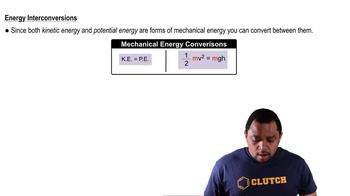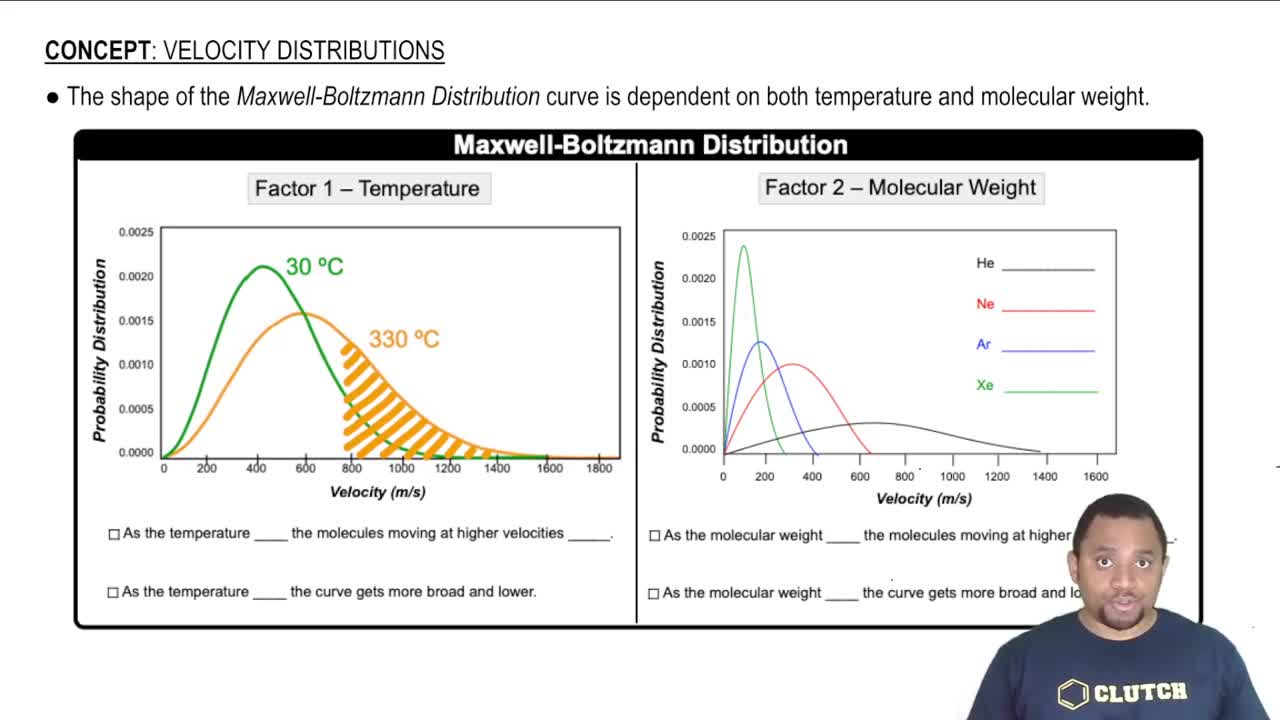The distance from Earth to the Moon is approximately 240,000 mi. (c) The speed of light is 3.00 ⨉ 108 m/s. How long does it take for light to travel from Earth to the Moon and back again?
Ch.1 - Introduction: Matter, Energy, and Measurement
Chapter 1, Problem 79
A baseball weighs 145.4 g. What is the kinetic energy, in joules, of this baseball when it is thrown by a major league pitcher at 150 km/h?
 Verified step by step guidance
Verified step by step guidance1
Convert the mass of the baseball from grams to kilograms by dividing by 1000, since the standard unit of mass in physics is kilograms.
Convert the speed of the baseball from kilometers per hour to meters per second. Use the conversion factor: 1 km/h = 0.27778 m/s.
Use the formula for kinetic energy: \( KE = \frac{1}{2}mv^2 \), where \( m \) is the mass in kilograms and \( v \) is the velocity in meters per second.
Substitute the converted mass and velocity values into the kinetic energy formula.
Calculate the expression to find the kinetic energy in joules.
Key Concepts
Here are the essential concepts you must grasp in order to answer the question correctly.
Kinetic Energy
Kinetic energy is the energy an object possesses due to its motion, calculated using the formula KE = 0.5 * m * v², where m is the mass in kilograms and v is the velocity in meters per second. This concept is crucial for determining how much energy the baseball has when thrown.
Recommended video:
Guided course

Kinetic & Potential Energy
Unit Conversion
Unit conversion is the process of converting a quantity from one unit to another, which is essential in this problem since the baseball's mass is given in grams and the velocity in kilometers per hour. Understanding how to convert grams to kilograms and kilometers per hour to meters per second is necessary to apply the kinetic energy formula correctly.
Recommended video:
Guided course

Conversion Factors
Mass and Velocity Relationship
The relationship between mass and velocity is fundamental in physics, particularly in the context of kinetic energy. A heavier object or a faster-moving object will have greater kinetic energy, which highlights the importance of both mass and speed in calculating the energy of the baseball when thrown.
Recommended video:
Guided course

Velocity Distributions
Related Practice
Textbook Question
1
views
Textbook Question
The distance from Earth to the Moon is approximately 240,000 mi. (d) Earth travels around the Sun at an average speed of 29.783 km/s. Convert this speed to miles per hour.
1
views
Textbook Question
Which of the following would you characterize as a pure or nearly pure substance?
a. baking powder
b. lemon juice
c. propane gas, used in outdoor gas grills
d. aluminum foil
e. ibuprofen
f. bourbon whiskey
g. helium gas
h. clear water pumped from a deep aquifer
5
views
Textbook Question
The U.S. quarter has a mass of 5.67 g and is approximately 1.55 mm thick. (a) How many quarters would have to be stacked to reach 575 ft, the height of the Washington Monument?
1
views
Textbook Question
The U.S. quarter has a mass of 5.67 g and is approximately 1.55 mm thick. (c) How much money would this stack contain?
1
views
